|
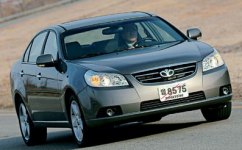 Daewoo's
mid-size sedan is called Tosca in Korea or rebadged to Chevrolet Epica
for overseas market. It replaces the outgoing Magnus (Evanda) and
competes in the same segment as Volkswagen Passat, Ford Mondeo, Toyota
Camry, Hyundai Sonata, Kia Magentis and Samsung SM5 (Nissan Teana).
Unsurprisingly, its biggest weapon is value for money – while it offers
plenty of space for five people and a lot of standard equipment, it is
priced to undercut even the cheapest rivals, including Hyundai Sonata.
This is necessary because Daewoo still lacks the image to match
Hyundai. In fact, GM is happy to keep its Korean subsidiary producing
no-frills bargain and supplying the equally grass-root Chevrolet and
Holden brand. This is not going to be changed in the foreseeable future. Daewoo's
mid-size sedan is called Tosca in Korea or rebadged to Chevrolet Epica
for overseas market. It replaces the outgoing Magnus (Evanda) and
competes in the same segment as Volkswagen Passat, Ford Mondeo, Toyota
Camry, Hyundai Sonata, Kia Magentis and Samsung SM5 (Nissan Teana).
Unsurprisingly, its biggest weapon is value for money – while it offers
plenty of space for five people and a lot of standard equipment, it is
priced to undercut even the cheapest rivals, including Hyundai Sonata.
This is necessary because Daewoo still lacks the image to match
Hyundai. In fact, GM is happy to keep its Korean subsidiary producing
no-frills bargain and supplying the equally grass-root Chevrolet and
Holden brand. This is not going to be changed in the foreseeable future.
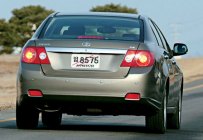 Being a
no-frills bargain, Tosca doesn't need a Chris Bangle-like design to
divide opinion. What it needs is an inoffensive design to satisfy all
kinds of people, from the conservative Korean and Chinese to the
open-minded American and Australian. Besides, styling it in-house would
be cheaper than hiring Italian design houses like its predecessor, so
it was designed in Korea under the guidance of David Lyon, the design
chief of GM Asia Pacific. The traditional sedan profile has long
overhangs at either ends of the 2700mm wheelbase. You can describe it
as conservative or characterless. Boring might be a word too harsh. Being a
no-frills bargain, Tosca doesn't need a Chris Bangle-like design to
divide opinion. What it needs is an inoffensive design to satisfy all
kinds of people, from the conservative Korean and Chinese to the
open-minded American and Australian. Besides, styling it in-house would
be cheaper than hiring Italian design houses like its predecessor, so
it was designed in Korea under the guidance of David Lyon, the design
chief of GM Asia Pacific. The traditional sedan profile has long
overhangs at either ends of the 2700mm wheelbase. You can describe it
as conservative or characterless. Boring might be a word too harsh.
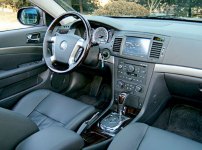 The
cabin is actually quite well finished, thanks to a neat design and
decent material quality. The upper half of the dashboard is made of
soft-touch textured plastics, leaving only the less-noticeable lower
half of the dashboard and the door panels to be made of lower grade
plastics. You can choose between an aluminum effect trim and a wood
effect trim, both look high quality enough. The driver can easily find
a comfortable driving position in the electrically adjustable seat.
Rear passengers will find generous leg room while the width of the rear
bench is enough for 3 adults. The only problem is a little short of
head room for tall passengers. The boot can swallow 480 liters, easily
above class average. The
cabin is actually quite well finished, thanks to a neat design and
decent material quality. The upper half of the dashboard is made of
soft-touch textured plastics, leaving only the less-noticeable lower
half of the dashboard and the door panels to be made of lower grade
plastics. You can choose between an aluminum effect trim and a wood
effect trim, both look high quality enough. The driver can easily find
a comfortable driving position in the electrically adjustable seat.
Rear passengers will find generous leg room while the width of the rear
bench is enough for 3 adults. The only problem is a little short of
head room for tall passengers. The boot can swallow 480 liters, easily
above class average.
The chassis is developed based on Magnus, as shown by their similar
dimensions and mechanical specifications. To provide modern crash
protection, more than 40 percent of the chassis
is made of high-strength steel, no wonder the car weighs as much as
1385-1485kg. To offset the increased weight, some car makers would
apply weight saving measures such as steel sheets of varying thickness,
steel parts made by hydroformed process or parts made of lightweight
materials like aluminum or magnesium. To the cost-conscious Daewoo,
however, none of these measures are adopted. This put a lot of burden
to the engine...
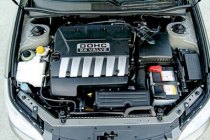 Apart
from Volvo, Daewoo is the only car maker in the world adopting
transversely mounted inline-6 engines. Codenamed XK, it has no
relationship with Jaguar, of course, but it probably stands for
"Xtremely Kompact" (just my guess). The 2.5-liter unit is carried over
from the outgoing Magnus. It features DOHC 24 valves but without
variable valve timing or direct injection - predictable for a
cost-conscious car. It produces only 156 horsepower, too bad for its
capacity and even worse when compare with its 3-liter-plus V6 rivals.
Fortunately, the long-stroke design produces decent torque, while
smoothness and quietness are remarkable. I always prefer the straight-6
configuration, not only because it is a classical design but it has the
benefits of smoothness, efficiency and simplicity. If you don't ask for
big capacity, a small straight-6 will fit into most cars yet return
good fuel consumption and emission. Apart
from Volvo, Daewoo is the only car maker in the world adopting
transversely mounted inline-6 engines. Codenamed XK, it has no
relationship with Jaguar, of course, but it probably stands for
"Xtremely Kompact" (just my guess). The 2.5-liter unit is carried over
from the outgoing Magnus. It features DOHC 24 valves but without
variable valve timing or direct injection - predictable for a
cost-conscious car. It produces only 156 horsepower, too bad for its
capacity and even worse when compare with its 3-liter-plus V6 rivals.
Fortunately, the long-stroke design produces decent torque, while
smoothness and quietness are remarkable. I always prefer the straight-6
configuration, not only because it is a classical design but it has the
benefits of smoothness, efficiency and simplicity. If you don't ask for
big capacity, a small straight-6 will fit into most cars yet return
good fuel consumption and emission.
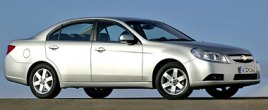 Nevertheless,
in the overweight Tosca, the 2.5 straight-six feels weak, especially it
is compulsorily mated to a 5-speed Tiptronic-style automatic
transmission with unresponsive gearshifts and a tendency to upshift at
rather low rpm. Change to manual mode could quicken its response, but
130 mph and 0-60 mph in 9.3 seconds are still hardly impressive. Nevertheless,
in the overweight Tosca, the 2.5 straight-six feels weak, especially it
is compulsorily mated to a 5-speed Tiptronic-style automatic
transmission with unresponsive gearshifts and a tendency to upshift at
rather low rpm. Change to manual mode could quicken its response, but
130 mph and 0-60 mph in 9.3 seconds are still hardly impressive.
The
2.0-liter version of the straight-6 is actually a better choice. It
is cheaper to buy, cheaper to run (combined consumption is 34.4mpg
versus 30.3mpg) while performance is actually identical, thanks to the
availability of 5-speed manual gearbox. The lighter nose also benefits
handling a little. However, you need to work hard to squeeze the
maximum 144 horsepower out of it.
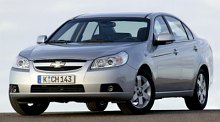 On the
other extreme, the 4-cylinder 2.0-liter common-rail turbo diesel feels
far more gusty. This engine is supplied by Italian diesel expert VM
Motori. It has 16-valve head and a variable geometry turbocharger to
produce a remarkable 150 horsepower at 4000 rpm and 236 lbft of torque
at 2000 rpm. As long as you can keep the tachometer at above 2000 rpm,
it provides stream of torque to ease your driving effort. On the down
side, the diesel engine cannot match the best class rivals for
quietness and refinement. On the
other extreme, the 4-cylinder 2.0-liter common-rail turbo diesel feels
far more gusty. This engine is supplied by Italian diesel expert VM
Motori. It has 16-valve head and a variable geometry turbocharger to
produce a remarkable 150 horsepower at 4000 rpm and 236 lbft of torque
at 2000 rpm. As long as you can keep the tachometer at above 2000 rpm,
it provides stream of torque to ease your driving effort. On the down
side, the diesel engine cannot match the best class rivals for
quietness and refinement.
On
the road, the suspension comprises of front MacPherson struts and
rear multi-link setup is biased towards comfort. It allows quite a lot
of body movement, both lateral and longitudinal. The speed sensitive
steering is well weighted but feels numb. The Tosca does not inspire
driving confidence like most European cars, nor its rival Hyundai
Sonata. Refinement also loses marks, as the cabin is not very well
insulated from tire noise and wind noise. At speed, wind noise could
become annoying.
An unimpressive car should rely on low price to sell. This is the case
for Tosca / Epica. However, even with price considered, it is still not
a car worth recommending. Cheap cars can be fun to drive.
Unfortunately, Tosca / Epica is short of fun. |